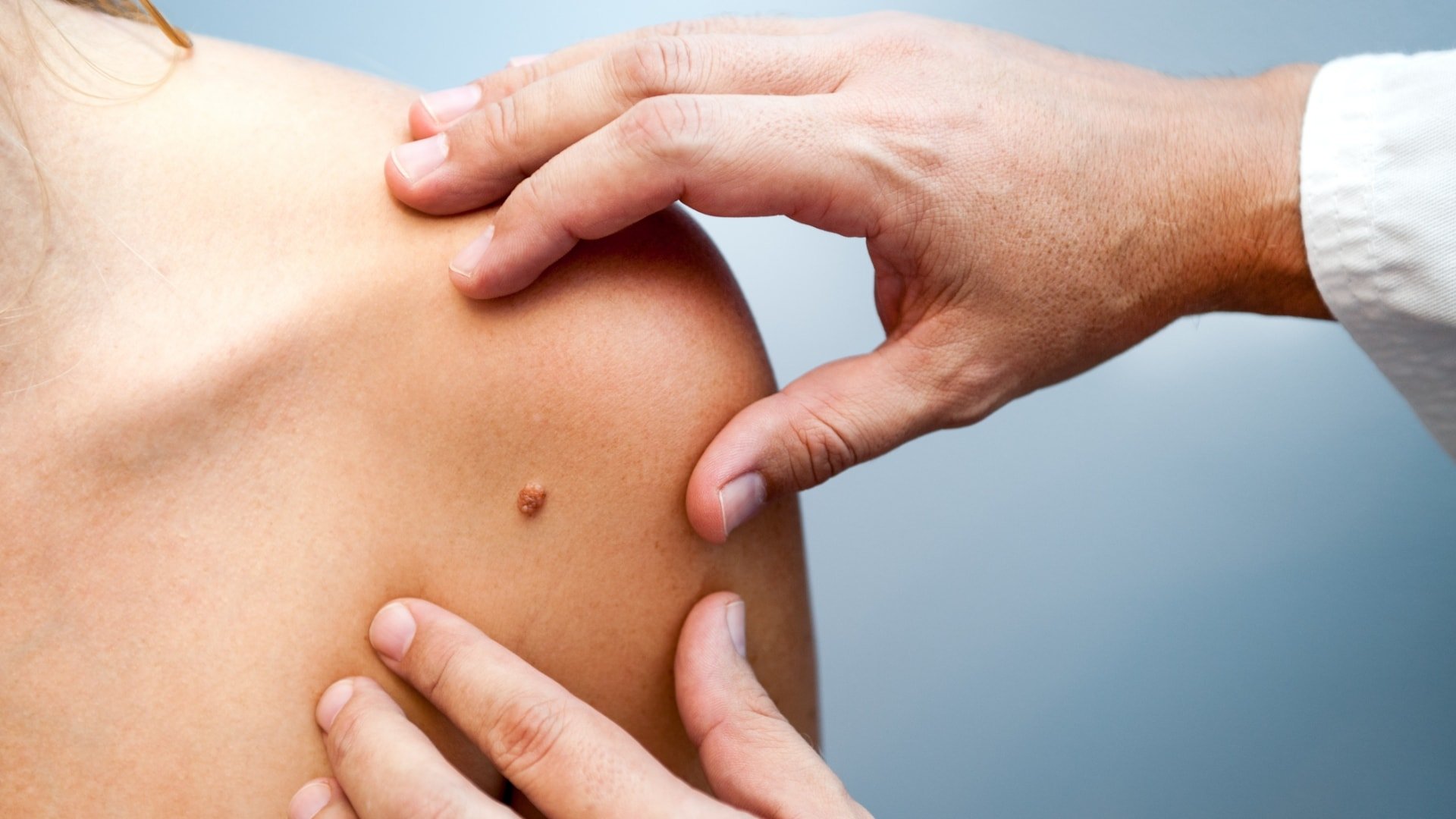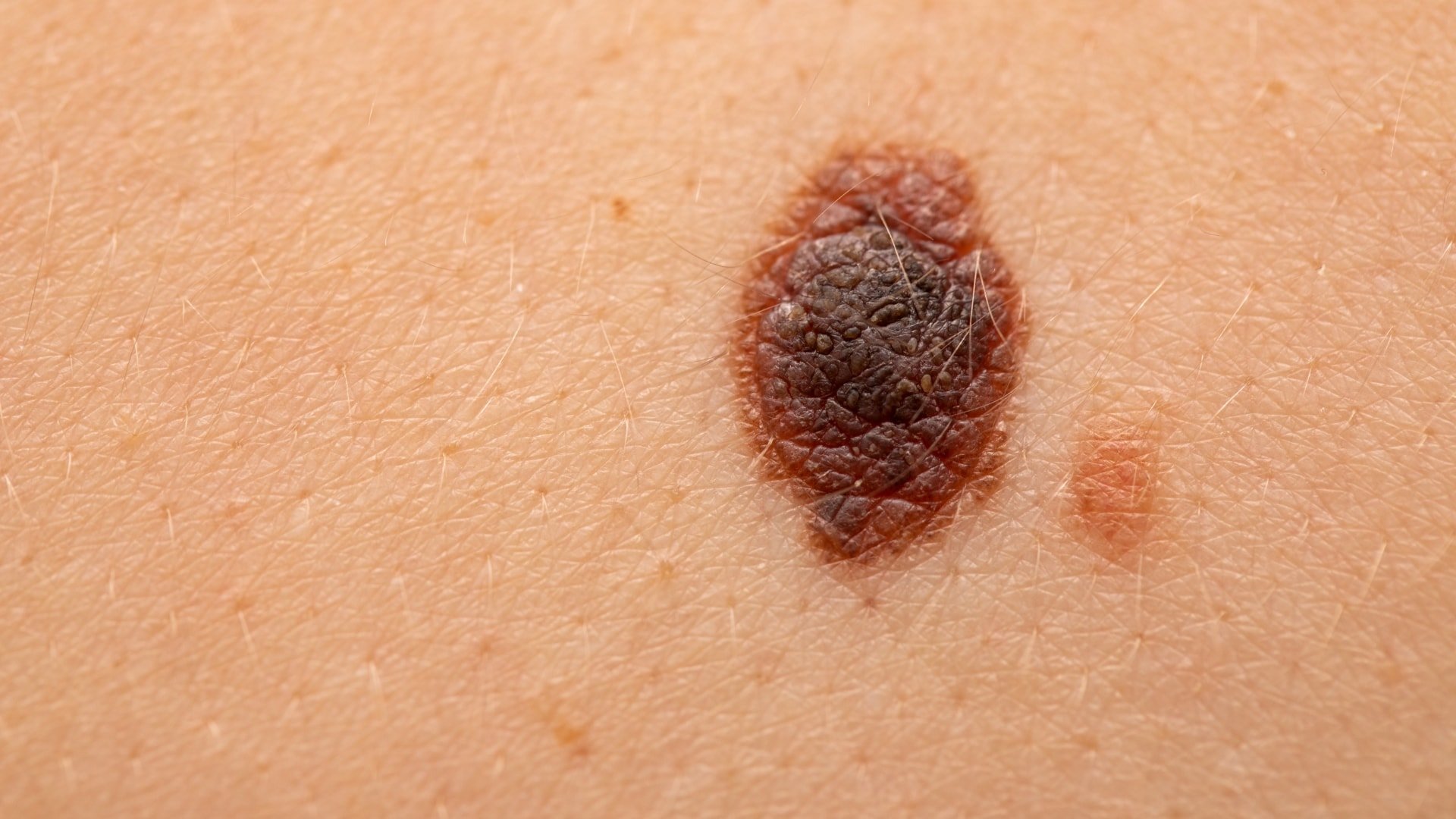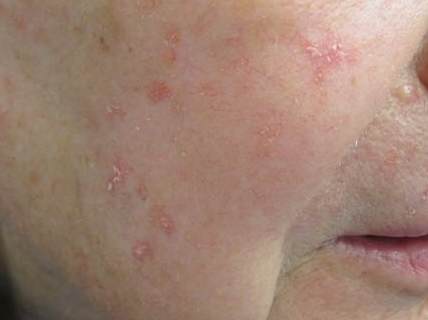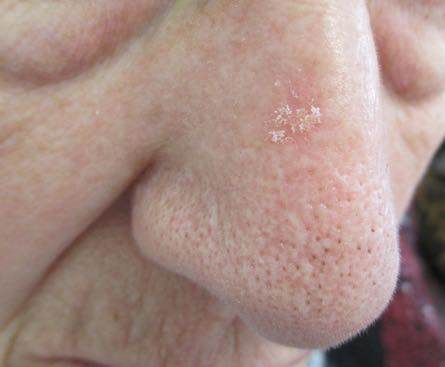The Toronto Dermatology Centre is one of the top places in Canada to diagnose and treat your skin cancer. Our staff of outstanding dermatologists offer both a comprehensive assessment and diagnosis of your skin lesions, and also discuss all the treatment and prevention options.
Skin cancer is the most prevalent of all types of human cancers. Fair-skinned people who sunburn easily are at a particularly high risk for developing skin cancer. Other less important causes of skin cancer include repeated medical and industrial x-ray exposure, scarring from diseases or burns, occupational exposure to compounds such as coal tar and arsenic, and family history of skin cancer.
Our Toronto Skin Cancer Centre is a premiere clinic in skin cancer diagnosis and management, and unique in having both top-notch dermatologists and plastic surgeons working together to ensure a proper and timely diagnosis, thorough skin evaluation, periodic monitoring, biopsies and surgical excisions when warranted with the best possible cosmetic outcome. As well, the wait times to see the dermatologist or plastic surgeon for a suspicious mole or lesion are kept to a timely fashion.
Basal Cell Carcinoma (BCC)
Basal cell carcinoma is the most common type of skin cancer and appears frequently on the head, neck, and hands as a small, fleshy bump. Other parts of the body may be affected as well. Basal cell carcinomas are frequently found in fair-skinned people and rarely occur in dark skin. It is fairly slow growing. Untreated, the cancer often will begin to bleed, crust over, heal, and repeat the cycle. This type of cancer very rarely metastasizes (spreads to other parts of the body), but it can extend below the skin to the bone and nerves, causing local damage.

Squamous cell carcinoma (SCC)
Squamous cell carcinoma is the second most common skin cancer; it is primarily found in fair-skinned people and rarely in dark-skinned individuals. Typically located on the rim of the ear, the face, lips, and mouth, this cancer may appear as a bump, or as a red, scaly patch. SCC can develop into large masses and become invasive. Unlike basal cell carcinoma, this form of cancer can metastasize (spread to other parts of the body); therefore, it is important to get early treatment. When found early and treated properly, the cure rate for both basal cell and squamous cell carcinomas is over 95 percent.
Bowen’s disease
Bowen’s disease is a form of skin cancer affecting the upper layer of skin (epidermis); it is considered a squamous cell carcinoma in situ. Most of these lesions are due to chronic ultraviolet radiation, typically from the sun. It most commonly affects the head, neck, trunk, arms or lower legs. If left untreated, Bowen’s disease can progress into invasive skin cancer referred to as squamous cell cancer (SCC).
Actinic Keratoses (AK): The Earliest Skin Cancer
Actinic keratoses are considered the earliest stage in the development of skin cancer. They are small red rough spots most commonly found on the face, ears, neck, lower arms, and back of the hands in fair-skinned individuals who have had significant sun exposure. Actinic keratoses can be treated by cryotherapy (freezing), topical chemotherapy (applying a cream or lotion), chemical peeling, dermabrasion, laser surgery, curettage, and photodynamic therapy (a chemical is applied to the skin prior to exposure to a light source). Proper use of sunscreens can help prevent actinic keratoses even after extensive sun damage has already occurred.
Malignant melanoma
Malignant melanoma is the most deadly of all skin cancers. The death rate is declining because melanoma is usually curable when detected in its early stages and patients are seeking help sooner.
Melanoma begins in melanocytes, the skin cells that produce the dark protective pigment called melanin that makes the skin tan. Since melanoma cells usually continue to produce melanin, the cancer appears in mixed shades of tan, brown, and black although it can also be red or white. Melanoma can metastasize (spread), making treatment essential. Melanoma may appear suddenly or begin in or near a mole, or another dark spot in the skin.
It is important to know the location and appearance of the moles on the body to detect changes early. Any changing mole must be examined by a dermatologist. Early melanoma can be removed while still in the curable stage.
Excessive sun exposure, especially sunburn, is the most important preventable cause of melanoma. Light-skinned individuals are at particular risk. Heredity also plays a part. A person has an increased chance of developing melanoma if a relative or close family member has had melanoma. Atypical moles (dysplastic nevi), which may run in families, and a large number of moles, can serve as markers for people at increased risk for developing melanoma. Dark skin is not a guarantee against melanoma. People with skin of color can develop melanoma, especially on the palms, soles, under the nails, in the mouth, or on the genitalia.
Check out this important video on melanoma called “Dear 16 year-old me”

Warning Signs of Melanoma Include:
- Changes in the surface of a mole.
- Scaling, oozing, bleeding, or the appearance of a new bump.
- Spread of pigment from the border of a mole into surrounding skin.
- Change in sensation including itchiness, tenderness, or pain.
The ABCDEs of Melanoma: When to Worry About Moles
The ABCDEs of Melanoma: When to Worry About Moles
Asymmetry – One half doesn’t match the other half in size, shape, color, or thickness.
Border irregularity – The edges are ragged, scalloped, or poorly defined.
Color – The pigmentation is not uniform. Shades of tan, brown, and black are present. Dashes of red, white, and blue add to the mottled appearance.
Diameter – While melanomas are usually greater than 6mm in diameter (the size of a pencil eraser) when diagnosed, they can be smaller. If you notice a mole different from others, or which changes, itches, or bleeds (even if it is small), you should see a dermatologist.
Evolution – The most important alerting sign is evolution or change in moles
Treatment of Skin Cancer
If a skin biopsy reveals cancer, the dermatologist has an array of medical and surgical procedures as treatment, depending upon the type of cancer, its location, and the needs of the individual.
Dermatologic surgical treatments include electrodessication and curettage (ED&C) that involves alternately scraping or burning the tumor in combination with low levels of electricity, surgical excision, cryosurgery (freezing using liquid nitrogen), and Mohs micrographic surgery. Other dermatologic treatments include radiation therapy and topical chemotherapy.
Early Detection is the Surest Way to a Cure
Develop a regular routine to inspect your body for any skin changes. If a growth, mole, sore, or skin discoloration appears suddenly, or begins to change, see a dermatologist. It is wise to have an annual skin examination by a dermatologist, especially for adults with lots of moles, significant past sun exposure or a family history of skin cancer.
The Best Defense – Sun Avoidance
Overexposure to ultraviolet light (sunlight or tanning lamps), especially if it results in sunburn and blistering, is the main cause of skin cancer. Seek shade if possible between 10am-4pm when the sun’s rays are most intense. Wear light-colored, tightly-woven, protective clothing like long sleeves and pants, a wide- brimmed hat, and sunglasses. Wear a sunscreen with both UVA & UVB protection, ideally with an SPF of 30 or more. Reapply sunscreen every 2-3 hours when in the sun and always after sweating or water exposure.
Result may vary from person to person.
Here is a selection of media & scientific articles with our renowned dermatologists Dr. Benjamin Barankin and Dr. Anatoli Freiman as they pertain to skin cancer. Toronto Dermatology Centre is proud to be among the largest & most comprehensive treatment centres for skin cancer in Canada as well as amongst the most widely published in the scientific literature on skin cancer in Canada.
Toronto Dermatology Centre is located in Toronto, Ontario, and serves men and women in North York, Vaughan, Richmond Hill, York, Aurora, Thornhill, Mississauga, Scarborough, Brampton, Etobicoke, Pickering, Peterborough, Guelph, Kitchener, Oakville, Barrie and all of Greater Toronto (GTA).
Thinking of visiting Toronto’s premier skin clinic soon?
Fill out the inquiry form below and let us know your area of interest.
Call us today @ 416.633.0001


